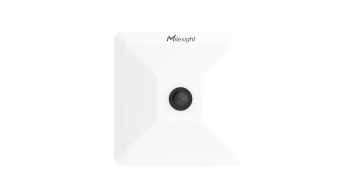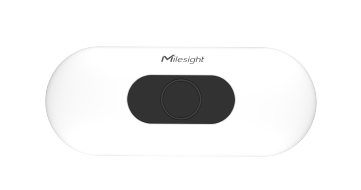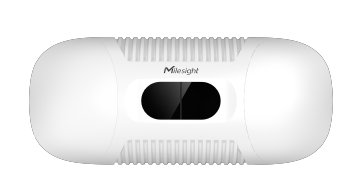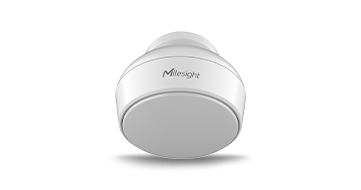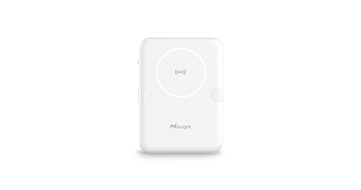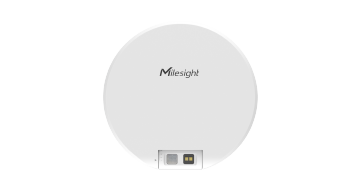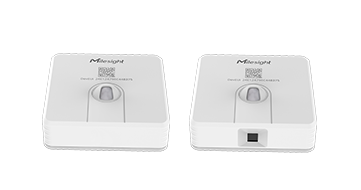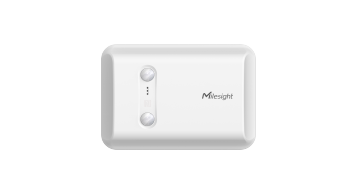People Counting Technology in 2025:
A Complete Comparison Guide

People counting technology has become indispensable in 2025, offering vital data for footfall analysis, real-time occupancy monitoring, and optimizing space utilization. With various methods available, from advanced AI and Time-of-Flight (ToF) to established PIR, infrared beams, RGB cameras, and radar, choosing the right one can be challenging.
This article compares these leading people counting technologies, examining their accuracy, efficiency, and privacy implications across different environments. Understanding the strengths of each sensor technology will empower you to select the best people counting solution for precise insights and smarter business decisions.
AI-Based People Counting
AI-driven people counting technology uses deep learning algorithms to analyze video or image data, identifying and tracking individuals in real-time. By processing complex visual information, AI enhances accuracy in detecting multiple people, even in crowded environments.
The key advantage of AI is its ability to distinguish between objects and humans, reducing false counts caused by shadows or reflections. It also adapts to various lighting conditions and provides advanced analytics, such as movement patterns and heatmaps.
AI-based solutions are ideal for large indoor spaces like shopping malls and airports, where high accuracy and detailed insights are required. They also work well in dynamic environments where traditional sensors might struggle.
Time-of-Flight (ToF) Technology
ToF technology measures the time it takes for emitted infrared light to reflect off surfaces, determining depth and movement. This enables highly accurate distance measurement and 3D mapping of people within a space without capturing personal identifiers, ensuring privacy protection.
The advantage of ToF is its precision in detecting multiple individuals, even in low-light conditions. Unlike cameras, it does not rely on visible light, ensuring privacy-friendly operation while maintaining accurate tracking.
ToF is best suited for wide areas such as open office spaces and retail stores, where depth perception is crucial for people counting accuracy. It also works well in high-traffic zones requiring precise occupancy monitoring.
Passive Infrared (PIR) Sensors
PIR sensors detect changes in infrared radiation caused by human body heat, triggering motion-based detection. They are commonly used for basic occupancy sensing rather than detailed people counting.
The main benefits of PIR sensors are their low power consumption, cost-effectiveness, and simple installation. However, they do not provide exact headcounts and may be affected by environmental temperature changes.
PIR-based people counting is ideal for small, enclosed spaces like private offices and restrooms, where only presence detection is needed rather than precise counting or tracking. As a completely anonymous detection method, it ensures privacy in sensitive areas like restrooms.
Infrared Beam Sensors
Infrared beam sensors use a transmitter and receiver to create an invisible beam across an entryway. When a person crosses the beam, it registers a count. This method is commonly used for entrance-based counting.
The main advantage of infrared beams is their reliability in counting people passing through a defined area. They are unaffected by lighting conditions but may struggle with groups walking closely together.
These sensors are best deployed at doorways, hallways, and narrow passages where individuals enter or exit one at a time. They work well for basic entry-exit traffic monitoring.
RGB Camera-Based People Counting
RGB cameras capture visual data and use image processing algorithms to detect and count people. This method relies on standard color images and can differentiate between objects and individuals.
The primary advantage of RGB cameras is their ability to analyze facial features and postures, improving accuracy in dynamic settings. However, their performance can be affected by lighting conditions and occlusions.
RGB camera-based counting is suitable for indoor environments like retail stores and conference rooms, where visual identification and tracking are necessary. It is also effective for areas with moderate foot traffic.
Monocular vs. Binocular Technology
- Monocular technology uses a single-lens camera to estimate depth and count people through AI-based object detection. It is lightweight and cost-effective but may have limitations in accuracy for complex scenes.
- Binocular technology, utilizing dual-lens cameras, offers enhanced depth perception and better differentiation between foreground and background objects. This results in improved accuracy, even in crowded environments.
Monocular systems are ideal for small-to-medium spaces such as meeting rooms, while binocular systems perform better in larger, high-traffic areas like shopping malls and public transportation hubs.
Radar-Based People Detection
Radar technology uses radio waves to detect movement and determine the distance and speed of objects. It works in various lighting conditions and can track motion without visual identification.
Radar's advantages include privacy protection, detection of micro-movements, and reliable operation in darkness or through obstacles. However, it may be difficult to distinguish between multiple individuals in close proximity.
Radar-based counting is best for areas requiring privacy-sensitive monitoring, such as restrooms, hospital wards, and security-sensitive zones. It is also effective in low-visibility environments like underground parking areas. However, since radar waves can penetrate certain materials, it may not be suitable for spaces where precise area containment is required.
Comparing People Counting Technologies
|
Technology |
Accuracy |
Privacy Level |
Ideal Applications |
|
AI-Based People Counting |
High – Can distinguish individuals in complex environments |
Medium – Uses image data, but can be designed with privacy-friendly processing |
Large indoor spaces like malls, airports, and offices, requiring detailed insights |
|
Time-of-Flight (ToF) Technology |
High – Provides depth perception and works in low light |
High – Does not capture identifiable images |
Open areas like retail stores and offices where precise occupancy tracking is needed |
|
Passive Infrared (PIR) Sensors |
Low – Only detects presence, not exact count |
Very High – Completely anonymous detection |
Small enclosed spaces like restrooms and private offices for basic occupancy sensing |
|
Infrared Beam Sensors |
Medium – Counts entry and exit but struggles with groups |
High – No personal data collected |
Doorways, hallways, and narrow passages for entry-exit monitoring |
|
RGB Camera-Based People Counting |
Medium-High – Can differentiate individuals but is affected by lighting and occlusions |
Medium – Captures images but can use anonymization techniques |
Indoor environments like retail stores and conference rooms, where visual identification is useful |
|
Radar-Based People Detection |
Medium – Works in low visibility but struggles with multiple close individuals |
Very High – No visual data, privacy-friendly |
Sensitive areas like restrooms, hospital wards, and low-visibility locations like underground parking |
Click to Explore Milesight People Counting Technology>>>
Where is People Counting Technology Used? Key Applications
Modern people counting technology, including occupancy monitoring sensors, footfall analysis, and visitor counting systems, enhances operations and decision-making across various industries. Real-time people flow analytics and occupancy data help businesses optimize resource allocation, improve safety protocols, and significantly enhance customer experiences.
- Smart Buildings: Improves energy efficiency, space utilization, and security by adjusting lighting, HVAC, and access control based on real-time occupancy data. Milesight's headquarters saves $45,000 annually through innovative technologies like people counting, showcasing its commitment to advanced smart offices and sustainability.
- Retail Stores: optimizes store layouts, staffing levels, and marketing campaigns by analyzing customer traffic patterns and conversion rates. Thus, store owners can measure marketing effectiveness to enhance sales and customer experience. For instance, Milesight partners with TC Group to install people counting sensors in 700+ European stores, including brands like JOTT, HERNO, and HAWKERS.
- Commercial Offices: Helps businesses optimize workspace planning, meeting room usage, and employee distribution. For example, Milesight's people counters helped optimize energy use in 62 buildings across Canada, achieving over $250,000 savings in just one quarter.
- Transportation Hubs: Enhances crowd management at airports, train stations, and bus terminals, reducing congestion and improving safety. At Jacksonville International Airport (JAX), Milesight VS350 Passage People Counters were implemented to enhance its operational efficiency and passenger experience.
- Hospitality & Entertainment: Manages capacity in hotels, casinos, museums, and event venues to optimize visitor experiences and ensure safety. A historic theater in Italy utilized Milesight's solution, integrating people counting with light control and IAQ monitoring for sustainable development.
- Healthcare Facilities: Monitors patient flow, staff movement, and waiting areas to improve operational efficiency and resource allocation.
- Public Buildings: Optimizes facility management and resource allocation in government centers and libraries by analyzing visitor trends to adjust staffing, justify funding, and enhance public service delivery.
Valuable Business Metrics Derived from People Counting Technology
- Foot Traffic Trends: Helps businesses analyze visitor patterns over time, identifying peak hours, seasonal fluctuations, and long-term trends for better staffing and marketing strategies. The bidirectional segment captured the largest revenue share—over 63.0%—in 2024.
- Dwell Time Analysis: Measures how long individuals stay in different areas, providing insights into engagement levels, store layout effectiveness, and visitor interest in specific locations.
- Conversion Rates: Compares the number of visitors to actual purchases or service usage, helping businesses assess marketing effectiveness and optimize sales strategies.
- Occupancy Levels: Monitors real-time space utilization, ensuring compliance with safety regulations and enabling efficient management of crowded areas.
- Workforce Optimization: Aligns staffing with actual foot traffic, improving customer service during busy periods and reducing unnecessary labor costs during low-traffic times.
- Space Utilization Insights: Identifies underutilized areas, helping businesses make informed decisions about layout changes, space reallocation, and future expansion needs.
Choosing the Right People Counting Technology for Your Needs
Selecting the right people counting technology solution starts with understanding your specific goals. Do you need basic visitor counting, precise real-time occupancy monitoring, or advanced detection like fall alerts? Different use cases demand varying levels of accuracy and specific features from the sensor technology.
Next, consider the installation environment. Is it an open space or a narrow corridor? Will the people counter device be placed indoors, outdoors, or in a semi-outdoor setting? Factors like ceiling height, lighting conditions, and required coverage area will impact your choice.
Additionally, think about privacy requirements. Do you need completely anonymous detection, or is it important to gather detailed insights into movement patterns? The integration of advanced technologies such as 3D People Counters can provide precise tracking and mapping of individuals, enhancing the overall effectiveness of your system. Understanding these key factors ensures that you choose a solution that best fits your space and operational needs.
Other considerations include accuracy requirements, budget constraints, ease of installation, and compatibility with existing management systems.
To help guide your decision, consider these key questions:
- Primary Goal: What is the main objective? (e.g., Basic footfall count, real-time occupancy for safety, detailed flow analysis, workspace optimization, fall detection).
- Required Accuracy: What level of accuracy is acceptable? (e.g., ~90% for general trends, >98% for critical occupancy).
- Environment Specifics: What is the ceiling height and the width/area of the entrance/space? Will the sensor be installed indoors or outdoors?
- Privacy Needs: Is complete anonymity essential (like ToF, Thermopile, PIR), or can AI-based video analysis (with potential anonymization features) be used?
- Integration Needs: Does the system need to integrate with existing BMS, security systems, or analytics platforms? What APIs or protocols are required?
- Budget: What is the budget range per sensor/location, considering both hardware and potential ongoing software/cloud fees?
- Maintenance & Installation: How complex can the installation be? What are the expected maintenance requirements?
By answering these questions, you can better match your requirements with the capabilities of different technologies like ToF, PIR, RGB, Radar, or Thermopile, leading to a more informed choice.
Milesight People Sensing: Beyond Counting, Smarter Insights
Milesight's People Sensing solution represents the next evolution in people counting technology. It goes beyond traditional counting by leveraging advanced sensor technology (like AI and ToF) to detect, analyze, and interpret human presence, behavior, and movement patterns. From detailed occupancy monitoring to sophisticated attribution analysis, it delivers data-driven insights that optimize operations, enhance space utilization, and drive higher profitability. By providing precise, real-time data across various industries, such as smart buildings, retail analytics, and facility management, Milesight empowers businesses with smarter decision-making and improved efficiency through this advanced people counting technology.
Frequently Asked Questions
How does milesight people counting technology ensure privacy compliance?
Privacy is a critical concern, especially with the potential risk of collecting personal information from electronic devices and online platforms. To address this, Milesight utilizes advanced technologies like ToF, PIR, and thermopile in its people counting sensors, ensuring that no personal data is captured. Instead, the devices only detect presence and count individuals without identifying them.
Data is transmitted using the LoRaWAN® protocol, which securely sends minimal, non-identifiable data over long distances. This approach is fully compliant with GDPR requirements, providing an effective people counting solution that prioritizes privacy while delivering accurate insights.
How scalable is people counting technology for large buildings or multi-location businesses?
People Counting Technology is highly scalable for large facilities, multi-floor buildings, and multi-location enterprises. Milesight’s solutions support Multi-Device Stitching, allowing multiple sensors to work together seamlessly through simple configuration. This feature expands coverage by merging data from various counting points, ensuring accurate and unified people flow analytics across large or complex spaces. Additionally, cloud-based and edge computing capabilities enable centralized management, real-time monitoring, and data integration across multiple sites, providing businesses with a clearer, more comprehensive view of occupancy patterns.
How accurate are milesight’s people counting products?
Milesight's People Counting Technology offers industry-leading accuracy, with most products achieving precision rates ranging from 95% to 99.8%. This high level of accuracy ensures reliable performance across various scenarios, from smart buildings and retail environments to public spaces and transportation hubs.
Milesight Related Products
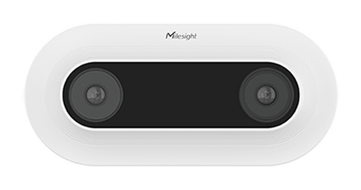
AI Stereo Vision People Counter
See Differences, and Make Difference in People Counting
Explore More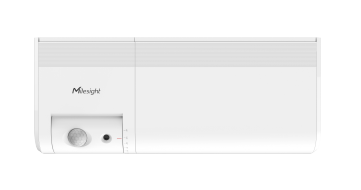
Mini AI Thermopile People Counter
Meet People Counter, and Let Sustainability Meet Efficiency
Explore MoreIf you are interested in Milesight, please leave us a message.
Contact Us
Contact Us
Contact Us to Get More Information
